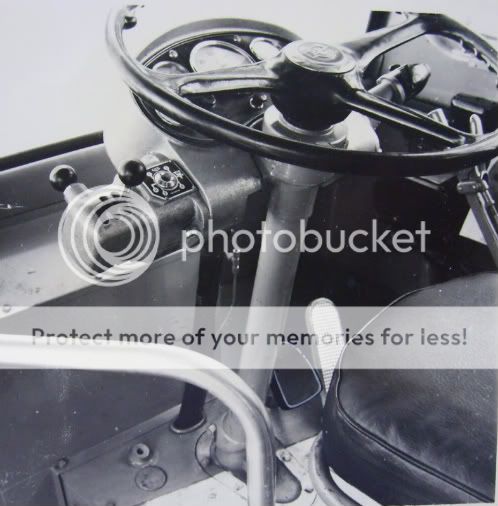Sorry, I know nothing about buses, I'm hoping someone on here can explain something for me, that I was trying to explain to a friend when reminiscing.
As a child in the 60's in Walsall, I remember the then very exciting new buses with front entry and flat fronts - maybe Daimlers? This was the time of the blue buses, before WMPTE. You could sit in a front seat and watch the driver, and he used some sort of gear selector that was a kind of switch with a short handle and spherical knob on the left hand side of the steering wheel, moving in a standard H-pattern. I think this was then new, as I think the older rear entry buses with separate driver cabs typically had a standard gear lever and clutch - maybe I'm wrong about that though.
My questions are
- Roughly how did these gears work? Was the 'switch' electric or hydraulic? (I don't see how it could be a mechanical linkage, really).
- Was it a semi-automatic gearbox that changed gear as he moved the switch, or was it some sort of pre-selector activated by a button or pedal?
- Did he have 2 pedals, or was there also a clutch?
- Do modern buses use this type of mechanism, or was it a short-lived phenomenon?
Hope you can help a total ignoramus.
As a child in the 60's in Walsall, I remember the then very exciting new buses with front entry and flat fronts - maybe Daimlers? This was the time of the blue buses, before WMPTE. You could sit in a front seat and watch the driver, and he used some sort of gear selector that was a kind of switch with a short handle and spherical knob on the left hand side of the steering wheel, moving in a standard H-pattern. I think this was then new, as I think the older rear entry buses with separate driver cabs typically had a standard gear lever and clutch - maybe I'm wrong about that though.
My questions are
- Roughly how did these gears work? Was the 'switch' electric or hydraulic? (I don't see how it could be a mechanical linkage, really).
- Was it a semi-automatic gearbox that changed gear as he moved the switch, or was it some sort of pre-selector activated by a button or pedal?
- Did he have 2 pedals, or was there also a clutch?
- Do modern buses use this type of mechanism, or was it a short-lived phenomenon?
Hope you can help a total ignoramus.



